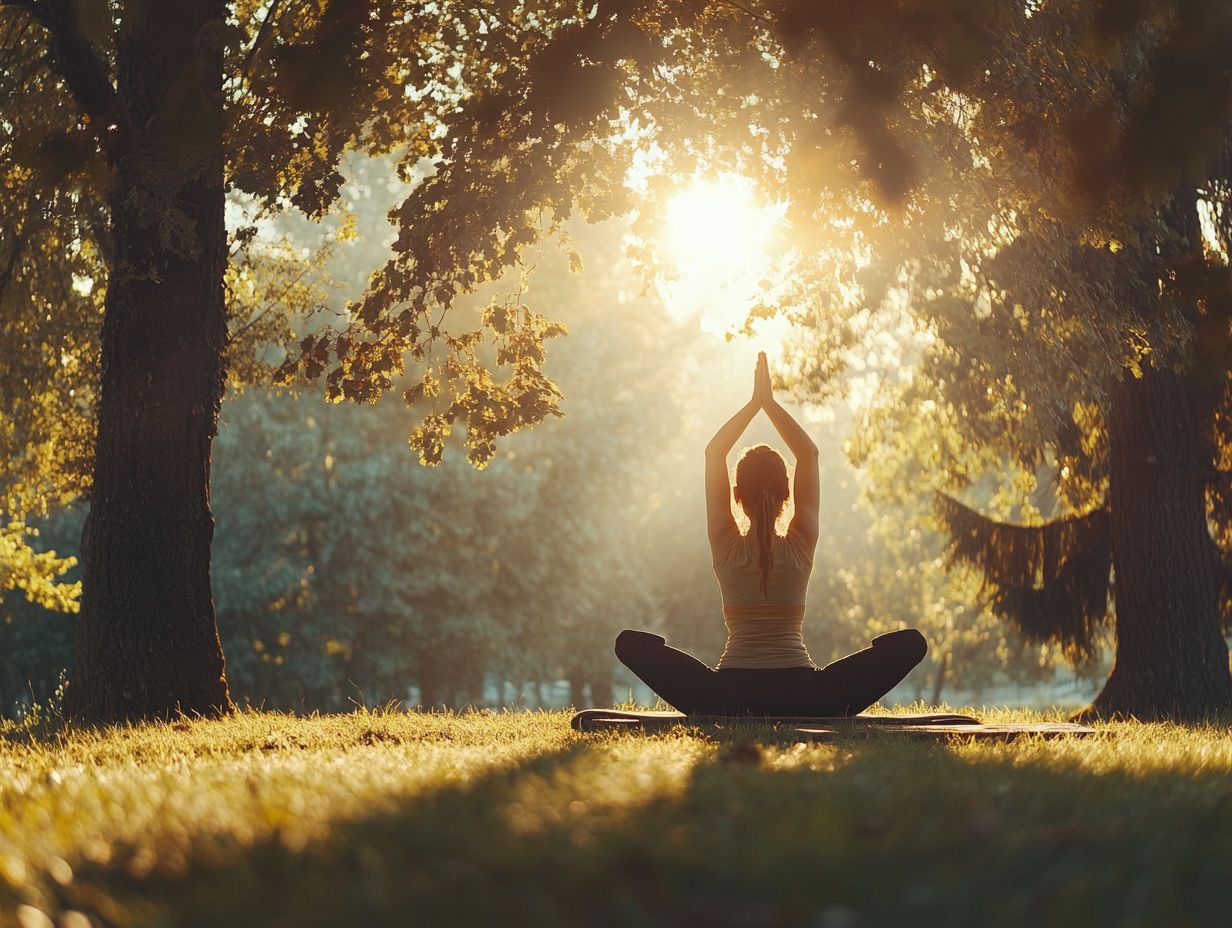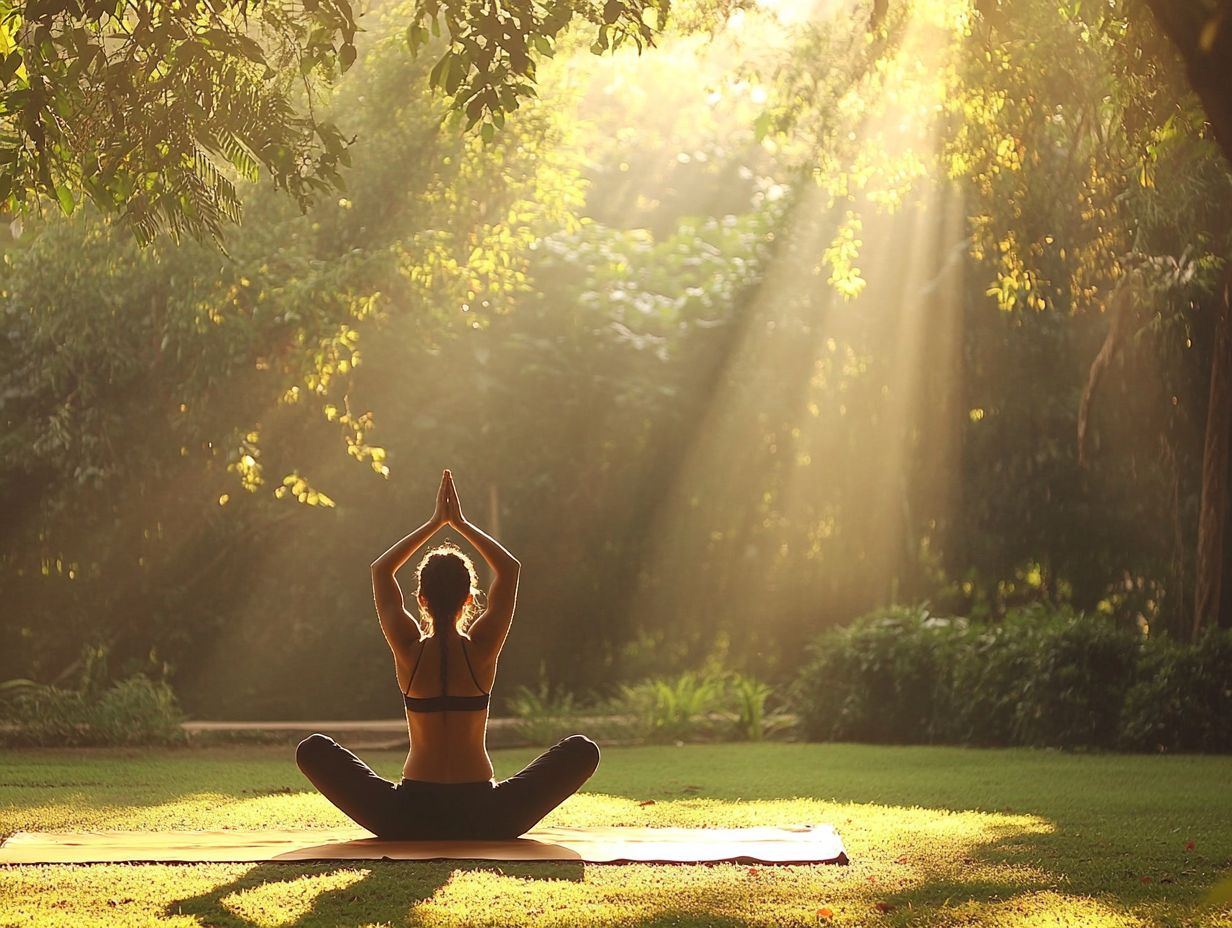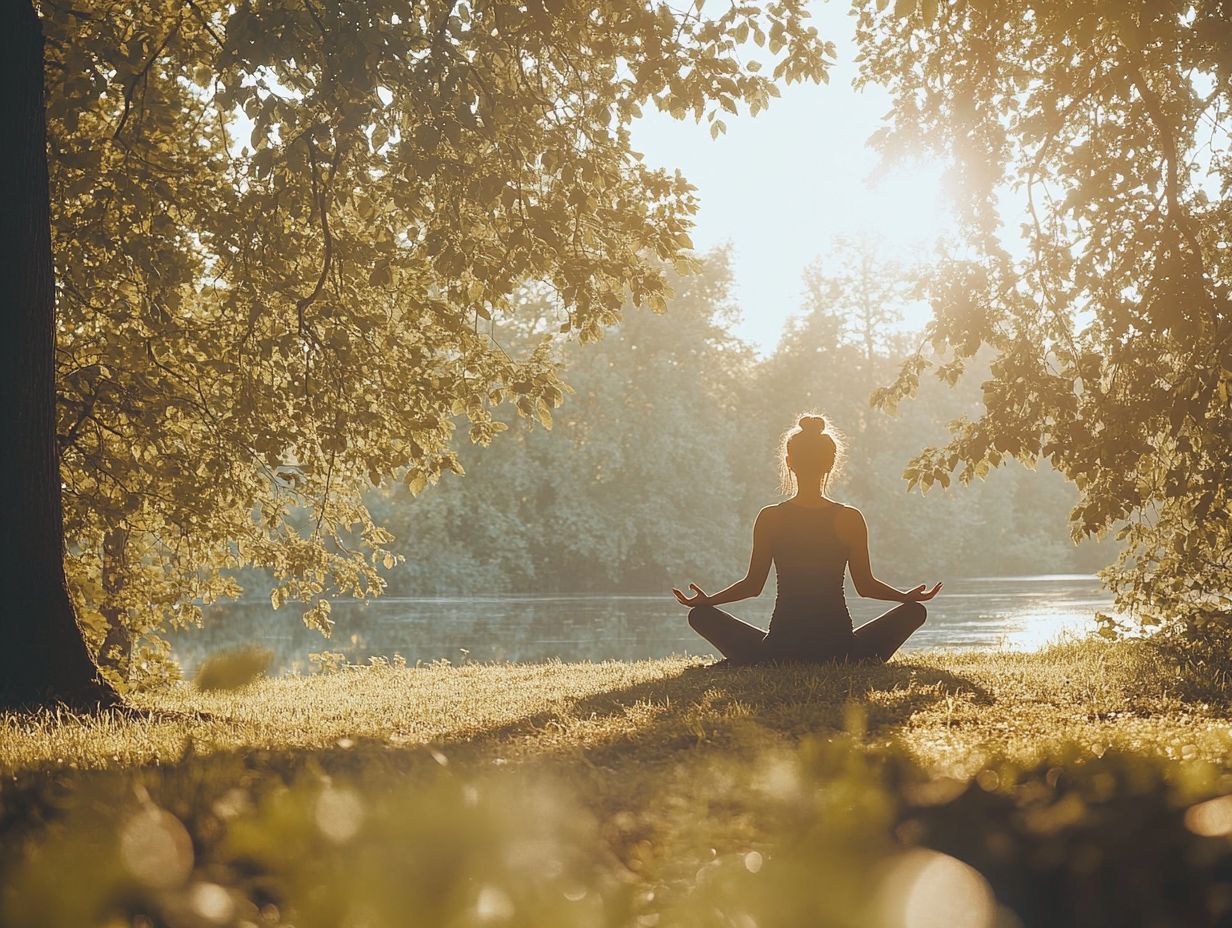Understanding the Benefits of Training for Anxiety
Anxiety impacts millions, presenting itself in diverse ways that can interrupt daily life.
This article explores the relationship between exercise and anxiety management. We will clarify anxiety disorders and discuss how physical activity can alleviate symptoms.
You ll uncover effective training methods, receive guidance for creating a personalized exercise plan, and discover strategies to enhance your path to anxiety relief.
Dive into this journey of discovery to see how movement can transform your mental well-being.
Contents
Key Takeaways:

- Understanding different types of anxiety disorders and their impact on daily life is crucial for managing the condition.
- Regular physical activity can improve anxiety symptoms and coping strategies.
- Incorporating various exercises into a tailored training plan can help reduce anxiety and enhance mental well-being.
What is Anxiety?
Anxiety is a mental health condition marked by persistent feelings of worry, fear, and apprehension. This can significantly impact your daily life.
It takes various forms, such as generalized anxiety disorder, panic disorder, and social anxiety disorder, each with unique symptoms and challenges.
Understanding how anxiety affects your emotional well-being is essential for effective treatment. It s especially important to consider its relationship with stress and mental health.
In recent years, anxiety disorders have become more common. This highlights the urgent need for effective treatments and strong support.
Definition and Types of Anxiety Disorders
Anxiety disorders include conditions marked by excessive fear and worry. Examples include generalized anxiety disorder, panic disorder, and social anxiety disorder.
Common symptoms include persistent nervousness, rapid heartbeat, and avoidance behaviors, which can disrupt daily life. Generalized anxiety disorder often leads to chronic worry, while panic disorder triggers sudden feelings of terror with physical symptoms like shortness of breath.
Social anxiety disorder involves an overwhelming fear of social situations, affecting personal and professional relationships. These conditions impact millions globally, leading to isolation and depression if left untreated.
The Connection Between Exercise and Anxiety
The link between exercise and anxiety is gaining attention. Physical activity can be a powerful tool for stress relief and mental health improvement.
Regular exercise releases endorphins your body s natural mood enhancers helping ease anxiety and promote emotional well-being.
Studies show that consistent physical activity leads to significant improvements in anxiety symptoms. Exploring this relationship reveals comprehensive ways to manage anxiety and elevate your quality of life.
How Physical Activity Affects Anxiety
Physical activity plays a crucial role in managing anxiety. Numerous studies showcase its remarkable benefits for mood enhancement and stress relief.
When you engage in exercise such as brisk walking, yoga, or high-intensity aerobics you activate your body’s physiological responses. This includes the release of endorphins, often called ‘feel-good’ hormones.
This natural boost not only enhances emotional resilience but also reduces pain and discomfort. Exercise even stimulates the process of creating new brain cells, leading to improved cognitive function.
Mindful yoga promotes physical well-being and mental clarity. These benefits illustrate how regular physical activity can be a powerful ally in alleviating anxiety.
Benefits of Training for Anxiety

Training for anxiety provides profound benefits. This includes diminished symptoms and enhanced coping mechanisms, elevating your quality of life.
Regular exercise serves as a powerful antidote to stress while building resilience and self-esteem. This creates a positive feedback loop that keeps you motivated.
Structured exercise programs unlock significant improvements in mental health and overall health outcomes.
Reduced Symptoms and Improved Coping Mechanisms
Regular exercise can significantly reduce anxiety symptoms and enhance coping mechanisms. This leads to improvements in emotional well-being.
Research shows that physical activity triggers the release of endorphins, natural mood lifters. A study in the Journal of Clinical Psychiatry found that individuals who exercised regularly reported lower anxiety scores.
Mental health experts recommend incorporating exercise alongside traditional therapies. Testimonials reveal that activities like yoga or running help individuals manage stress and cultivate resilience.
Types of Training for Anxiety
Various training types can support you in managing anxiety. These range from aerobic exercise to strength training and low-impact activities.
- Aerobic activities (e.g., brisk walking, jogging)
- Strength training (e.g., weight lifting)
- Low-impact activities (e.g., yoga, Pilates)
Aerobic activities elevate your heart rate and release endorphins. Strength training enhances physical health and boosts confidence.
Low-impact activities like yoga and Pilates promote mindfulness and relaxation, invaluable in your journey to manage anxiety effectively.
Different Forms of Exercise and Their Effectiveness
Aerobic workouts and strength training provide varying effectiveness in managing anxiety. Research highlights that aerobic activities significantly lower anxiety levels.
These exercises stimulate endorphin release, uplifting your mood. Strength training also offers mental health benefits, fostering feelings of accomplishment and control.
Experts recommend including both exercise types in a well-rounded routine. This approach equips you to tackle anxiety-related challenges effectively.
Creating a Training Plan for Anxiety
Crafting a training plan for anxiety requires a thoughtful, structured approach. It should combine an exercise schedule with tailored fitness tips and healthy habits to suit your needs.
A well-crafted training plan elevates your motivation. This ensures consistency in your exercise routine and leads to enhanced mental health outcomes.
It should encompass a balanced blend of aerobic and resistance training, complemented by mindfulness practices, effectively addressing both your physical and emotional well-being. By setting realistic workout goals and incorporating a diverse array of activities, you can cultivate resilience against anxiety and promote long-term health maintenance.
Tips for Incorporating Exercise into Daily Routine

Incorporating exercise into your daily routine requires strategic planning and a touch of motivation, allowing you to establish a consistent workout regimen that effectively supports anxiety management.
By earmarking specific times in your calendar for workouts, you can treat these sessions as important appointments that simply cannot be missed.
Finding workout partners can significantly enhance your motivation. After all, shared goals often lead to increased accountability and a greater sense of enjoyment.
If your schedule is tight, consider exploring high-intensity interval training, which involves short bursts of intense exercise followed by rest. It s efficient and effective! You can even incorporate short, 10-minute bursts of exercise throughout the day these can be remarkably effective.
Make tiny yet impactful changes, like taking the stairs instead of the elevator or enjoying brisk walks during breaks, to contribute to a heightened activity level, making it easier to stay active without feeling overwhelmed.
Additional Strategies for Managing Anxiety
Beyond exercise, various strategies for managing anxiety can significantly enhance your overall mental health and well-being. Consider embracing mindfulness practices and exploring therapy options, such as those offered by BetterHelp.
These complementary techniques work together harmoniously with physical activity to tackle the multifaceted nature of anxiety disorders. Engaging in mindfulness practices like meditation and deep breathing can profoundly reduce stress, while therapy offers tailored coping strategies and invaluable emotional support.
By combining these approaches with regular exercise, you can achieve a comprehensive method for anxiety management and bolster your emotional resilience.
Other Techniques to Complement Training for Anxiety
Other techniques can beautifully complement your training for anxiety, including mindfulness, therapy, and various coping mechanisms that enhance your emotional well-being.
By integrating mindfulness meditation into your routine, you can cultivate a heightened awareness of your thoughts and feelings, leading to a more grounded approach when faced with anxiety triggers. When paired with cognitive behavioral therapy, which expertly reshapes negative thought patterns, these methodologies come together to create a strong framework for managing anxiety effectively.
Engaging in social activities, like group classes or community involvement, further enriches your experience by fostering meaningful connections and alleviating feelings of isolation. When you employ these techniques alongside regular exercise, you establish a comprehensive strategy that not only tackles anxiety head-on but also promotes your overall emotional and physical health.
Frequently Asked Questions
What is anxiety training?
Anxiety training is a form of therapy that teaches individuals how to manage and cope with their anxiety through various techniques and strategies, including exposure therapy, relaxation training, and cognitive strategies.
What are the benefits of anxiety training?

Anxiety training can provide numerous benefits, such as reducing symptoms of anxiety, improving coping skills, and increasing self-awareness. For more insights, check out understanding the connection between anxiety and training, which also highlights better sleep quality and boosts self-confidence.
Who can benefit from anxiety training?
Anyone struggling with anxiety can benefit from training. This applies to all ages, genders, and backgrounds.
People with diagnosed anxiety disorders or those who experience occasional anxiety will find it helpful too.
What are some common techniques used in anxiety training?
Anxiety training includes techniques like deep breathing exercises and mindfulness practices. Other methods are relaxation techniques and exposure therapy.
Cognitive-behavioral therapy helps people change negative thought patterns, making it effective for many.
Is anxiety training effective?
Yes! Studies prove that anxiety training can work wonders in reducing symptoms. However, its effectiveness can vary, so finding the right approach and therapist is crucial.
Can anxiety training be done online?
Absolutely! Many therapists now offer anxiety training online, making it easy for you to get help from home.
Start your journey to a calmer you now!






